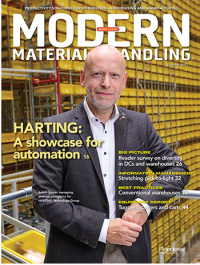Navigating motive power choice
Go to the source—your operators—and get a handle on their power concerns, recharge patterns, and how these might impact productivity.
Taking time to stay informed on motive power is generally a good thing in terms of managers’ time, but when lift truck operators are regularly in a state of worry about running out of power, that is another matter, says Steven LaFevers, explaining his thinking on determining if a motive power switch is in order.
LaFevers is vice president of emerging technology for Hyster, a lift truck OEM that supports multiple types of motive power options. Finding the motive power that best suits your lift truck fleet can be challenging, he explains, because multiple choices are available, and plenty of vendors have power studies or charging and refueling methodologies that can make one choice fit a broad range of operations.
While not against the potential value of power studies that examine the duty cycles and power needs of an operation, LaFevers’ advice is to take a step back from such analyses and go to the people who interact most with the lift truck assets: your operators.
“There is a fear of running out of power among operators, and anything that distracts from the purpose of the of the material movement is probably going to negatively impact productivity,” says LaFevers.
Finding out more about what operators are facing is a good first step, adds LaFevers, in discovering how well your current motive power choice or choices are working out.
“The first thing to consider is to find out how much time your operators are spending worrying about power,” he says. “This can be discovered by giving them a very simple form to fill out every time they charge, and then look at those charging intervals and assess if you are happy with the productivity level associated with those intervals.”
Part of the issue, and not an entirely bad part, is that multiple proven choices are out there for motive power, including lead-acid batteries, thin-plate pure lead (TPPL), lithium-ion batteries, as well as hydrogen fuel cell powered lift trucks, which have a very fast refueling time (about 3 minutes) but that require fueling infrastructure.
Some leveraging of online selection tools could help managers decide among these options, says LaFevers, but also go to your operators, and find out more about their issues and practices related to charging intervals and equipment swaps.
Another tip, says LaFevers, is to know your current ratio of lift truck units per shift to operators per shift. A one-to-one ratio is ideal, he says, but some operations may not realize the ratio is getting out of balance. Managers see their lift truck operators moving materials, but might not realize that there’s excessive swapping of entire truck units, rather than a tighter ratio that can be achieved when the motive power choice matches up well with the duty cycles of the operation.
“Take a look at what your count of units is versus operators per shift. If you have a very high count of units versus or divided by the number of operators—like 125% or above—you need to investigate power source options,” says LaFevers.
A general guideline to think about, says LaFevers, is that for one-shift operations with a relatively light duty cycle, traditional lead acid is usually a good fit, while for two-shift operations, a closer look at lithium may be in order, while for three-shift operations with demanding duty cycles, hydrogen fuel cell lift truck power merits a close look. This isn’t a hard and fast rule, and may take further study to determine between choices, but LaFevers contends this breakdown of duty cycle profile to best power choice generally holds true.
The increasingly fast pace of fulfillment center operations, coupled with labor availability concerns, is causing more operations to rethink motive power choice to see if a new type of lift truck power could lead to higher materials handling productivity, and less messing around with power.
This is why a good first step is to gauge if your operators are having issues with motive power, and get a handle on the ratio of units to operators. “To me, making the best motive power source decision should result in two key outcomes: achieving that one-to-one relationship between operators and fleet units, and resolving or reducing the amount of time your operators have to think or worry about charging,” says LaFevers.

Article Topics
Blogs News & Resources
Two voices of reason on pallet materials 60 Seconds with Bob Trebilcock, outgoing executive editor, Modern Materials Handling Learn from lift truck service history The reBound Podcast: How Pitney-Bowes is innovating with autonomous vehicles. Packaging Corner: Be open to change 60 Seconds with Robert Martichenko of American Logistics Aid Network The reBound Podcast: Looking for talent in all the right places: How Essendant is revolutionizing recruitment More BlogsLatest in Materials Handling
ASME Foundation wins grant for technical workforce development The (Not So) Secret Weapons: How Key Cabinets and Asset Management Lockers Are Changing Supply Chain Operations MODEX C-Suite Interview with Harold Vanasse: The perfect blend of automation and sustainability Consultant and industry leader John M. Hill passes on at age 86 Registration open for Pack Expo International 2024 Walmart chooses Swisslog AS/RS and software for third milk processing facility NetLogistik partners with Vuzix subsidiary Moviynt to offer mobility solutions for warehouses More Materials HandlingAbout the Author
Subscribe to Materials Handling Magazine

Find out what the world's most innovative companies are doing to improve productivity in their plants and distribution centers.
Start your FREE subscription today.
April 2024 Modern Materials Handling

Latest Resources












